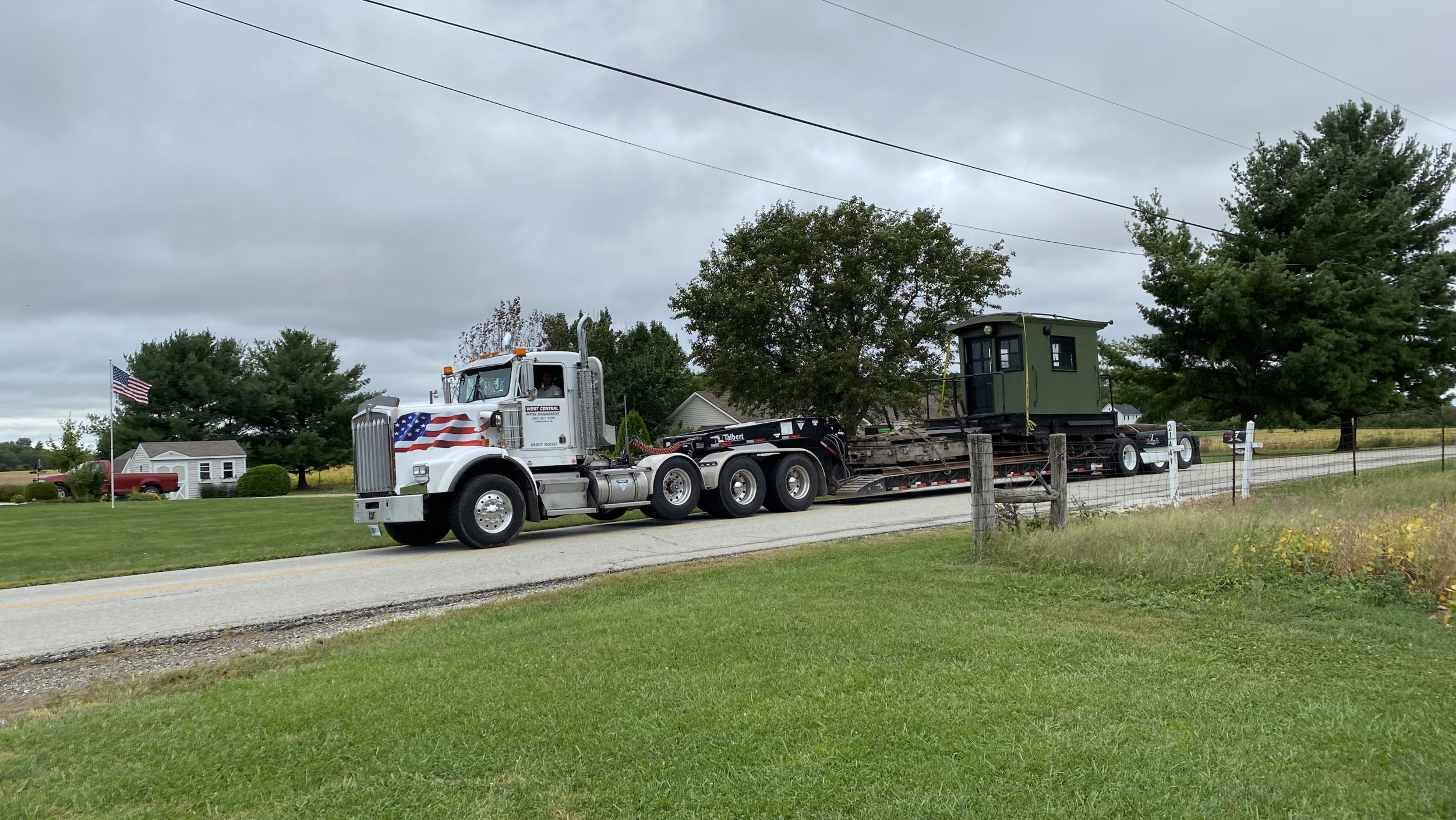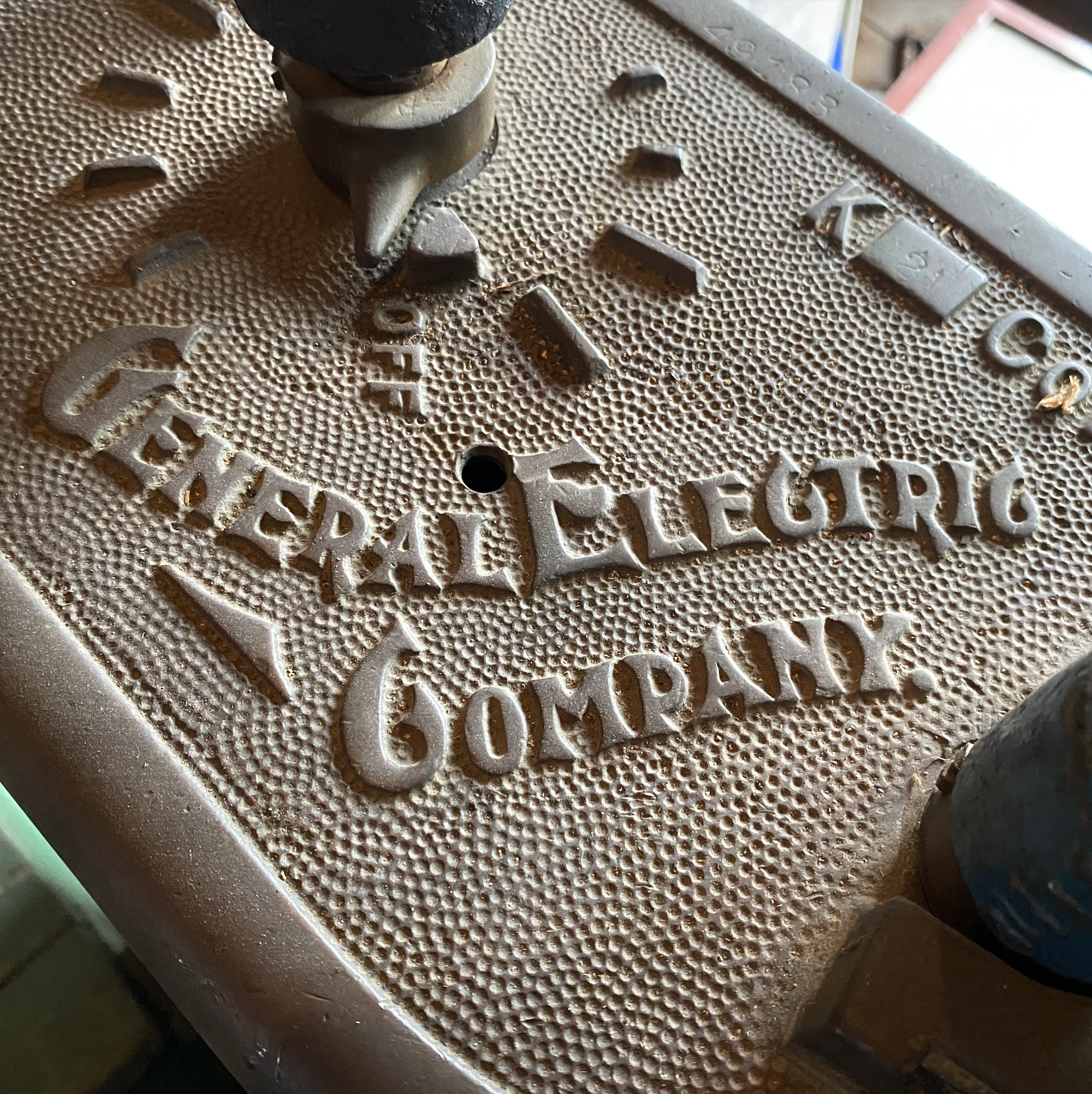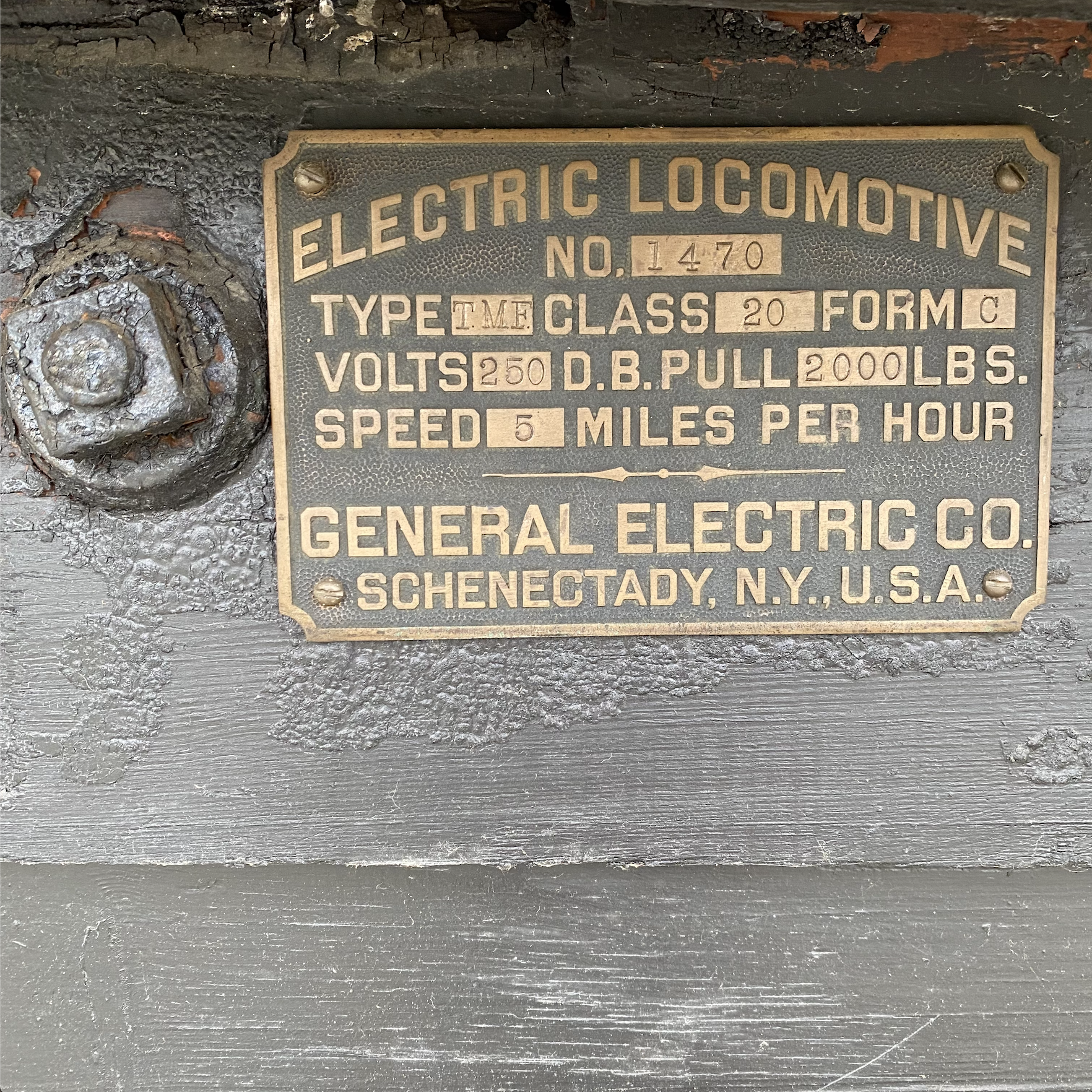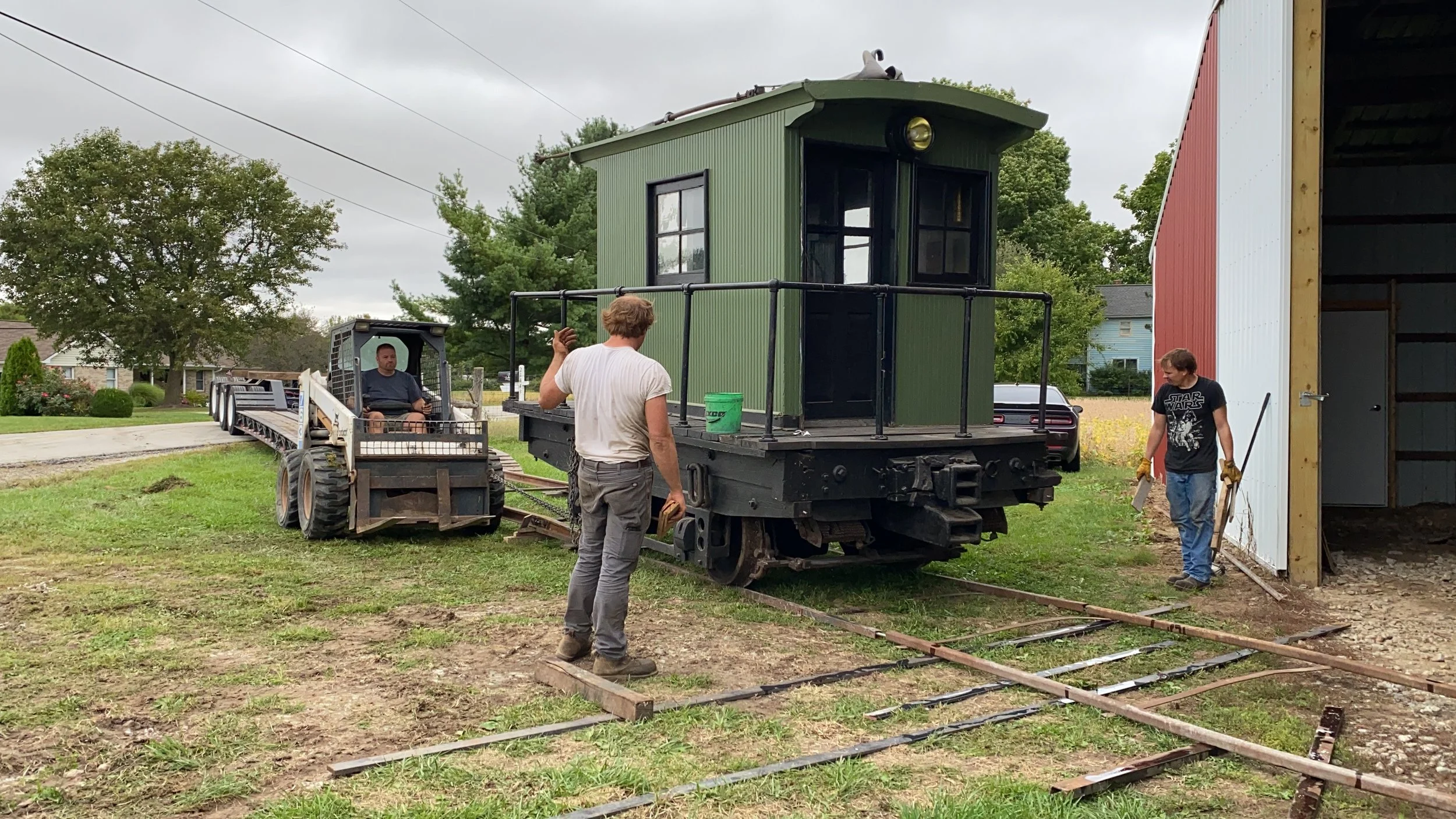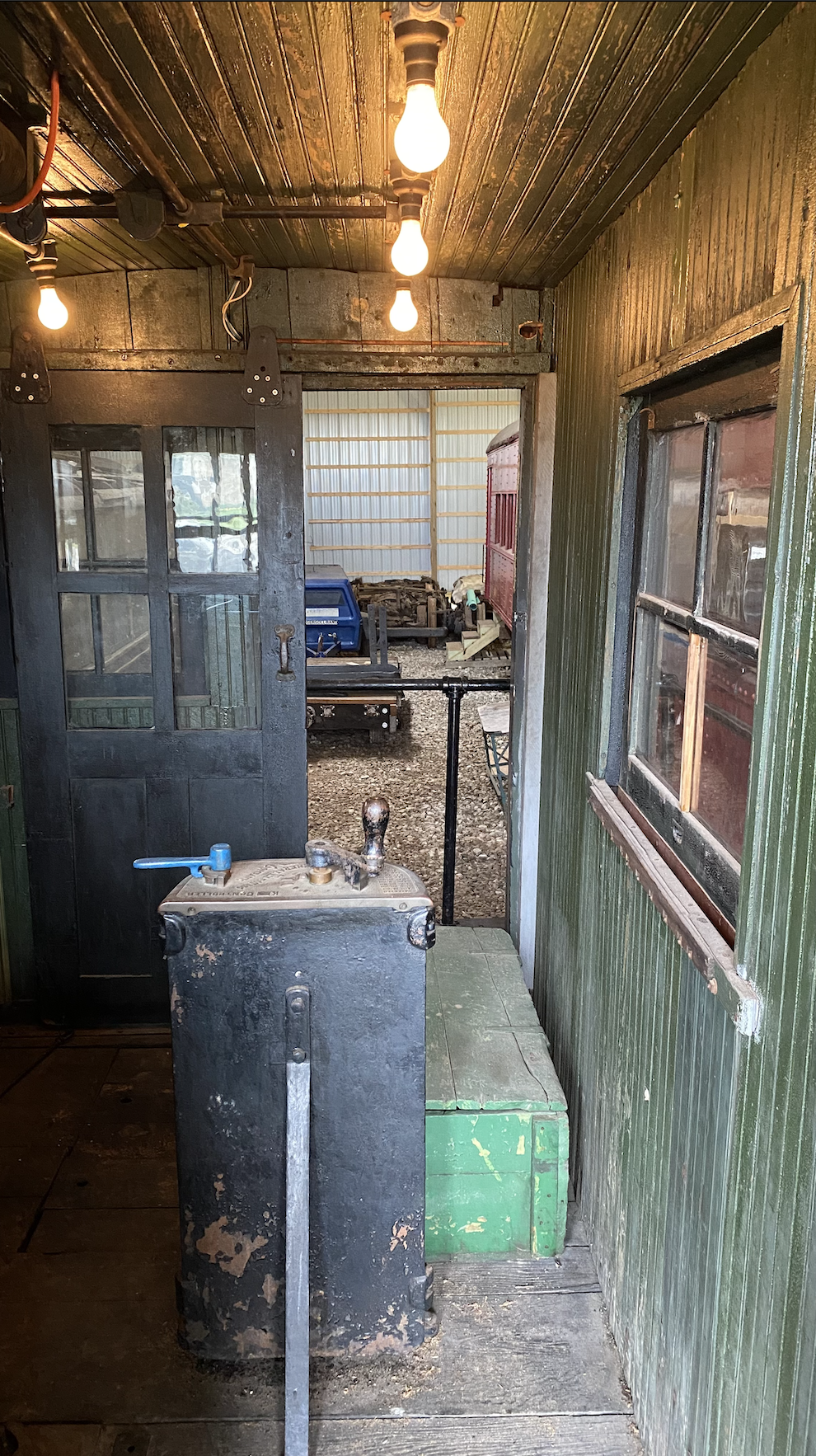Singer No. 1 at the South Bend works. Howard Zillmer photo.
Singer Manufacturing Co. No. 1 is a rare, wooden 1898-built locomotive designed by General Electric for use at Singer’s South Bend cabinetry factory. During the nineteenth century, Singer capitalized upon the rich forestry found in northern Indiana for manufacturing sewing machine cabinets. Small, electric locomotives like Singer No. 1 proved beneficial to the plant's operations, since the probability of fires was reduced when compared to the nature of steam locomotives.
Singer No. 1 served the South Bend works until 1955, when it was purchased by Robert Selle; afterwards, it was stored for several years in Illinois, including at the Illinois Railway Museum’s former North Chicago site. Upon moving to Florida, Selle sold Singer No. 1 to Purdue University classmate David Peat, along with a small cart used by the locomotive while in service. The locomotive features a K-style controller, 250-volt motors and link-pin couplers, Link pin couplers were commonplace in the early days of American railroading.
Singer No. 1 arrives at the HHTC restoration facility. September 2021.
Until 2018, the locomotive resided at the Indiana Museum of Transport and Communication, later known as the Indiana Transportation Museum. After David Peat’s passing in 2020, HHTC approached the Peat Family regarding donation of the locomotive.
The Peat Family is excited to see the locomotive live on in a preservation environment for the education and enjoyment of fellow Hoosiers. David Peat, having an affinity for antique machinery, printing presses, and railroads, wished the locomotive to continue in such a setting. The HHTC Board of Directors recognizes and appreciates the family’s generosity.
While in need of structural repairs and minor electrical work, Singer No. 1 is in overall great condition. Both the locomotive and its wooden cart are located together indoors at an HHTC facility. Once a permanent home is established, the organization plans to make the locomotive operable as part of an interactive exhibit.
